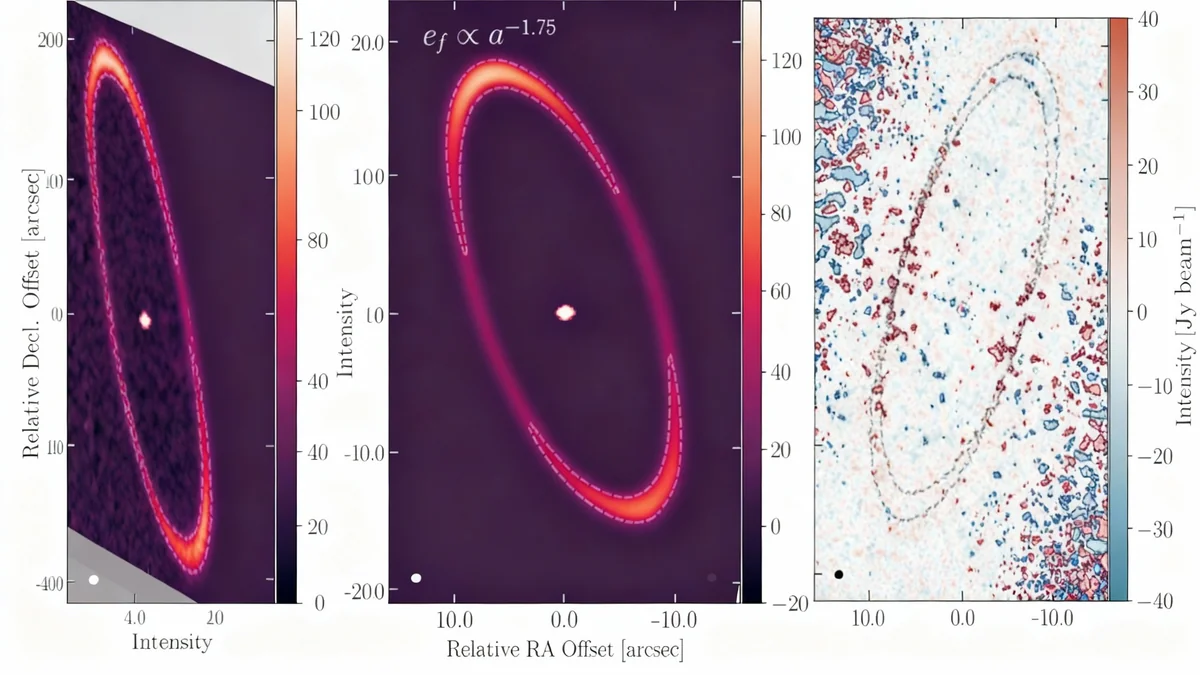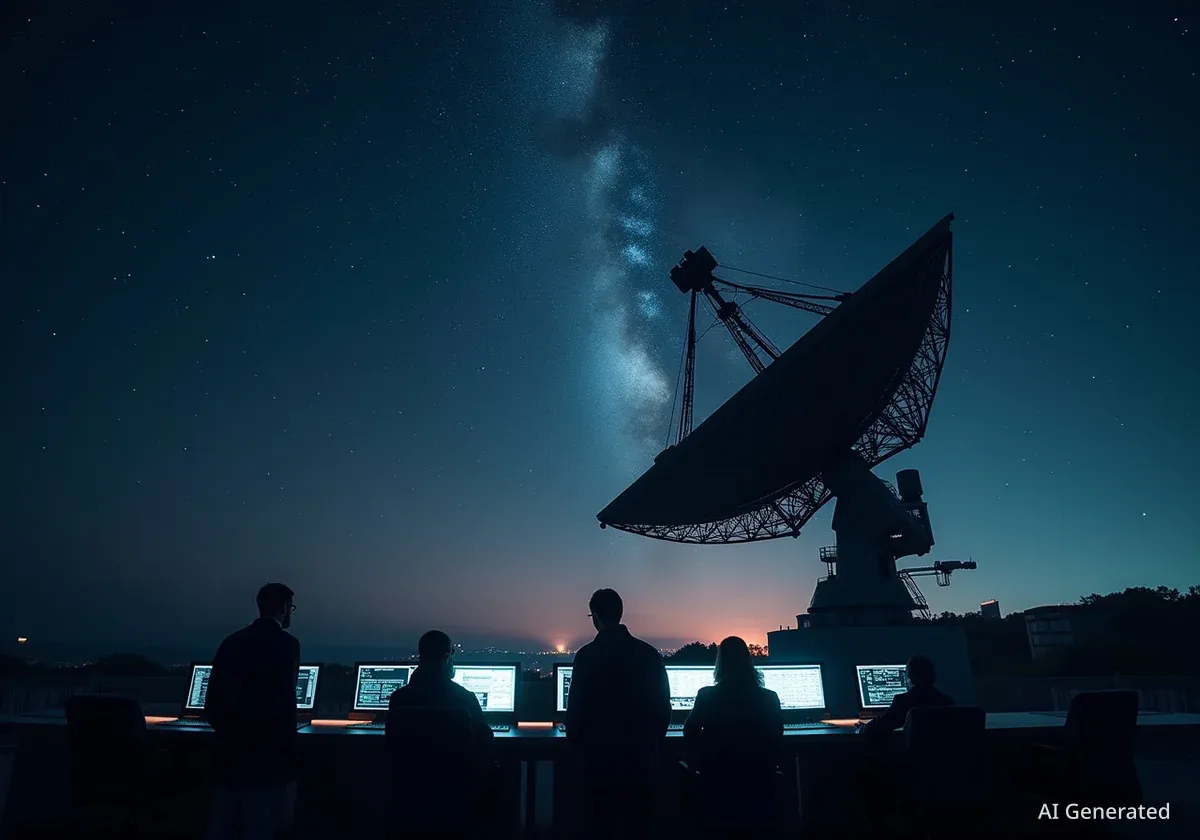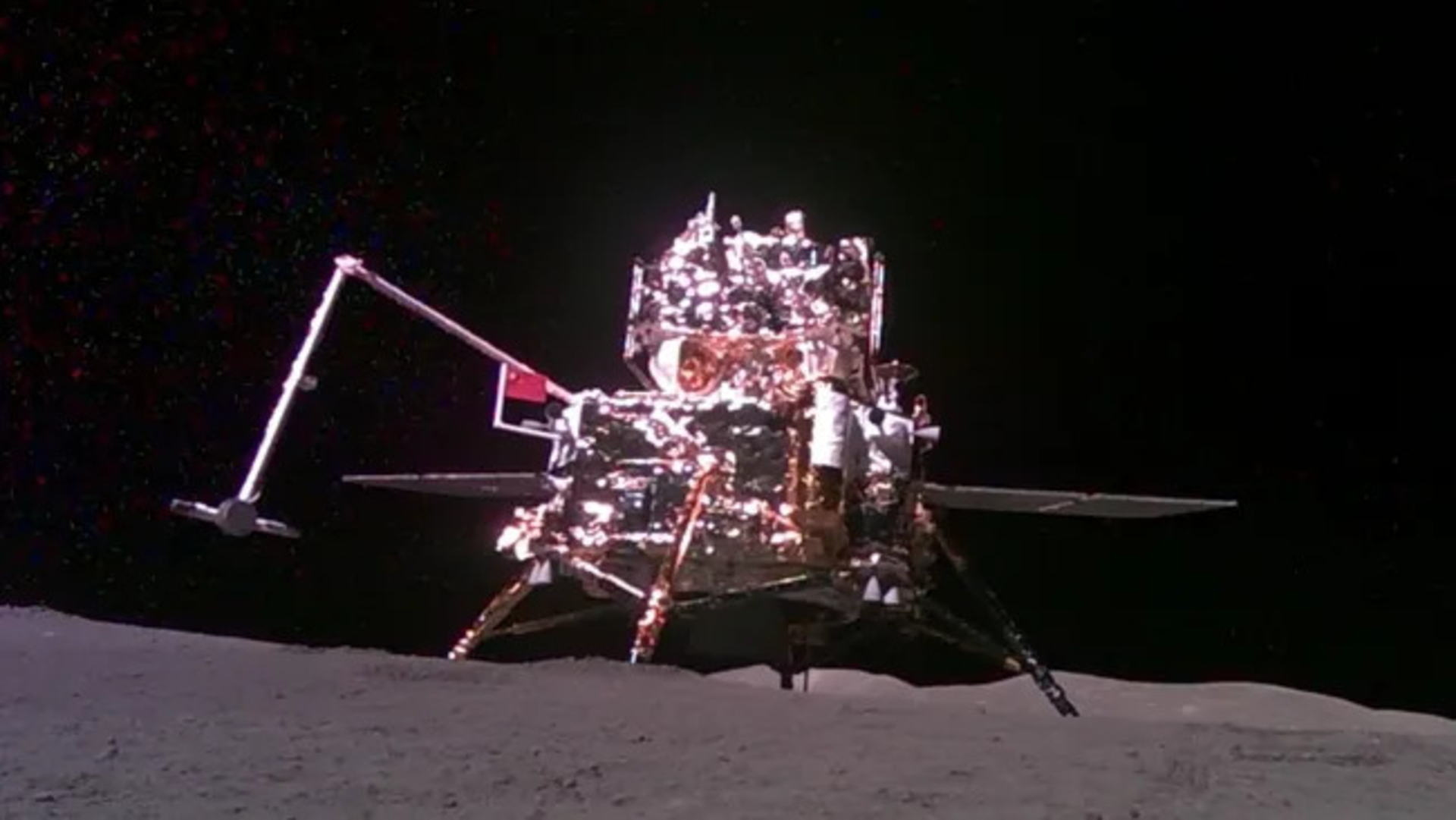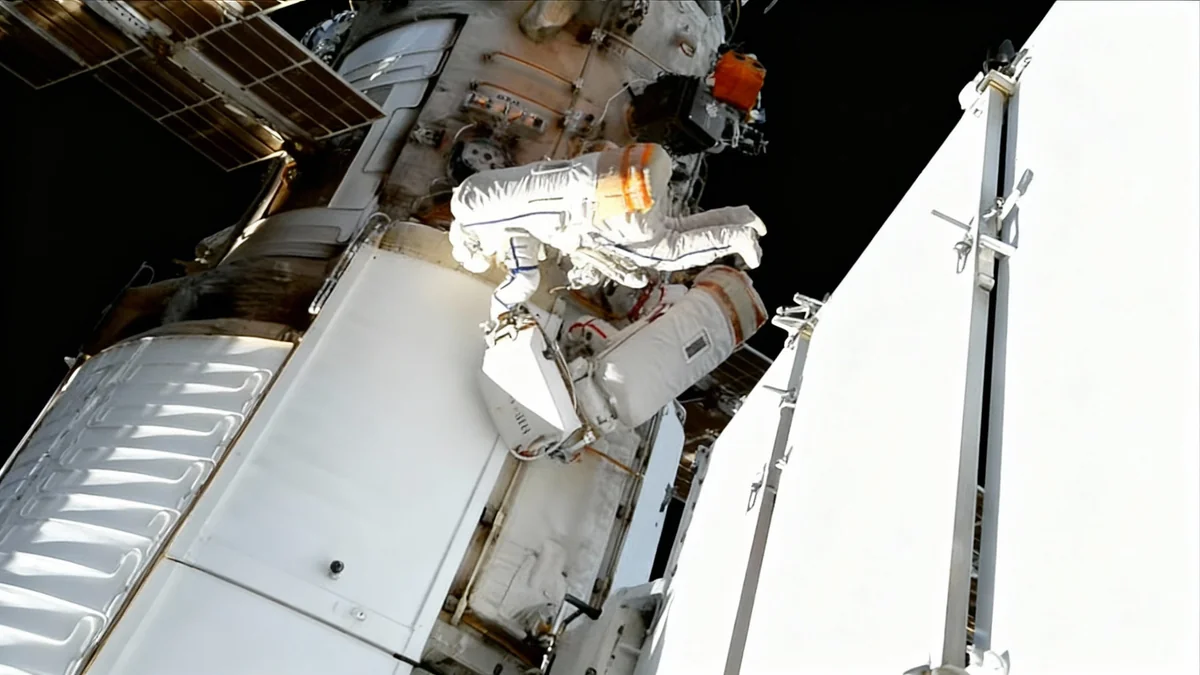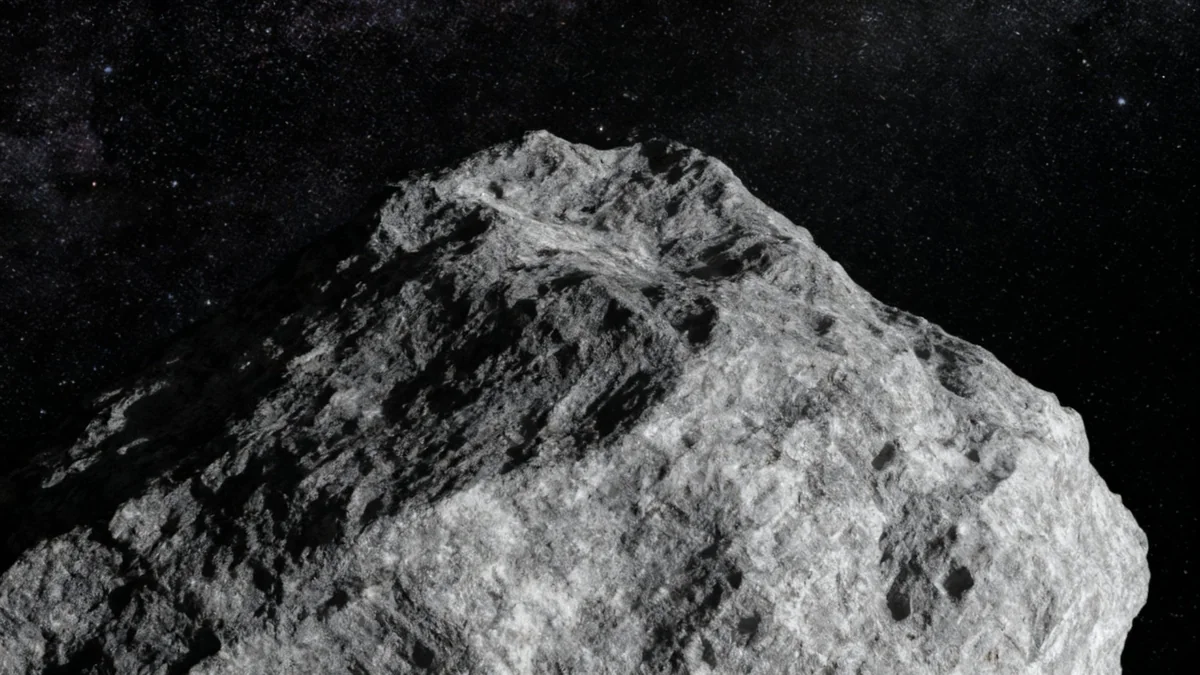Astronomers have uncovered new evidence suggesting an unseen planet may be sculpting the prominent debris disk surrounding the star Fomalhaut. Using data from the Atacama Large Millimeter/submillimeter Array (ALMA), a research team identified a subtle but significant structural feature in the disk that points to the gravitational influence of a hidden world.
The findings, published in The Astrophysical Journal, propose that a planet with a mass between one and sixteen times that of Earth could be responsible for the observed irregularities. This discovery revitalizes the search for planets in one of the most studied star systems beyond our own.
Key Takeaways
- New analysis of ALMA data reveals an unusual structure in the debris disk around the star Fomalhaut.
- Scientists identified a "negative eccentricity gradient," where the orbits of particles vary based on their distance from the star.
- This gradient causes a noticeable brightening and widening of the ring at its farthest point from Fomalhaut.
- The leading explanation for this phenomenon is the gravitational pull of an undiscovered planet, estimated to be a "sub-Neptune" in size.
A New Look at a Familiar System
Fomalhaut, located approximately 25 light-years from Earth, has long been a subject of interest for astronomers due to its bright, dusty ring. This structure is considered an analogue to our solar system's Kuiper Belt, a region of icy bodies beyond Neptune.
Previous observations have hinted at the presence of planets, but conclusive evidence has remained elusive. A team led by researchers from the Center for Astrophysics, Harvard & Smithsonian, applied a novel analysis technique to high-resolution ALMA observations to re-examine the disk's structure in unprecedented detail.
Gravitational Sculpting in Star Systems
In our own solar system, the planet Neptune is known to gravitationally shape the Kuiper Belt. Its immense gravity influences the orbits of smaller objects, creating gaps and clumps through a process called orbital resonance. Astronomers believe similar processes are at play in other star systems, allowing them to infer the presence of exoplanets by studying the architecture of their debris disks.
The new study focused on the orbits of the planetesimals—large rocky and icy bodies that make up the disk. By analyzing their collective behavior, the team uncovered a pattern that standard models could not explain.
The Eccentricity Gradient Explained
The key discovery is what the paper's authors describe as a "negative eccentricity gradient." In simple terms, this means the shape of the planetesimals' orbits changes depending on their average distance from the star. Normally, objects in a stable ring would share similar orbital characteristics.
However, the data from Fomalhaut showed that the eccentricity, or the deviation of an orbit from a perfect circle, was not uniform. This gradient has a direct visual consequence on the disk's appearance.
The negative gradient causes planetesimals to cluster at the apocenter—the point in their orbit farthest from the star. This clustering makes that part of the ring appear both brighter and wider in telescope images, a feature clearly visible in the ALMA data.
This phenomenon, which the researchers term "eccentric velocity divergence," provides a powerful tool for detecting the subtle influence of a planetary body. A positive gradient would cause a similar brightening at the pericenter, the point closest to the star.
Modeling the Fomalhaut Disk
To confirm their hypothesis, the team developed a sophisticated model of the Fomalhaut system that incorporated the negative eccentricity gradient. They then compared the output of their model to the actual ALMA observations.
The results showed a remarkable match. The model successfully reproduced the observed brightening and widening at the disk's apocenter, providing strong support for their theory. The researchers used a Markov-Chain Monte Carlo algorithm, a statistical method for finding the best fit, to validate their results.
"Our model aligns exceptionally well with the observational data," stated J. B. Lovell, the study's lead author. "The presence of this gradient is the most compelling explanation for the disk's large-scale structure, and the influence of a planet is the most plausible cause for the gradient itself."
The team tested other scenarios, including models without a gradient or with different orbital dynamics, but none provided as close a fit to the observational data. The success of the eccentric velocity divergence model marks a significant step forward in understanding how planetary systems evolve.
The Hunt for a Hidden Planet
With strong evidence for a gravitational sculptor, the focus now shifts to the nature of the unseen object. The study explores two primary scenarios for the planet's location:
- A Planet Between the Rings: Recent observations from the James Webb Space Telescope (JWST) have revealed a faint, intermediate ring inside the main disk. One possibility is that a planet orbits in the gap between these two rings, gravitationally clearing out material.
- An Interior Planet: Alternatively, a planet could orbit closer to the star, interior to both rings. In this scenario, it would shape the gap through orbital resonances, much like Neptune sculpts the Kuiper Belt.
Based on their calculations, the authors estimate the planet's mass to be between 1 and 16 times that of Earth, placing it in the "sub-Neptune" category. A planet of this size would be too small and faint to be detected with current direct imaging technology.
Interestingly, a planet was once thought to have been directly imaged in the Fomalhaut system, but subsequent observations revealed it was likely a transient dust cloud. The planet proposed in this new study could be a separate object or a much less massive version of the original candidate.
Alternative Theories and Future Research
While a planet is the leading explanation, the authors acknowledge another possibility. The observed structure could potentially be caused by the collective self-gravity of the planetesimals within the disk itself, without the need for a planet.
However, current theoretical models are not yet advanced enough to simulate this complex scenario accurately. The research team plans to develop new computational tools to investigate this alternative hypothesis in the future.
For now, the evidence points strongly toward a hidden world shaping the Fomalhaut system. Future observations with next-generation telescopes may finally be able to detect this elusive planet, providing a direct confirmation of the powerful gravitational carving that shapes planetary systems across the galaxy.

